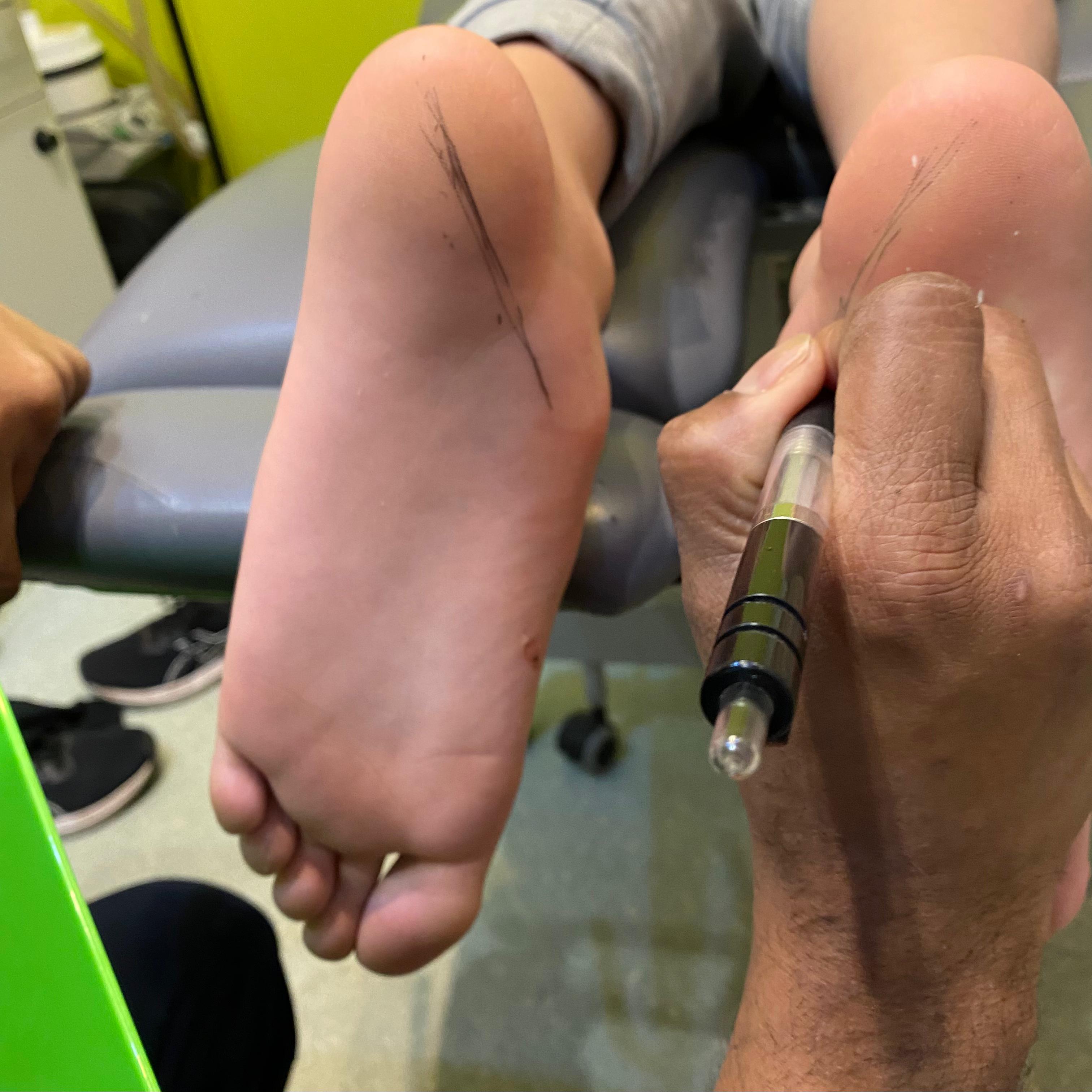A musculoskeletal assessment is an in-depth overall body check for any misalignments, injuries, or overuse issues you may be experiencing.
Anybody can have a musculoskeletal assessment as biomechanics plays an important role in managing all lower limb concerns. They are most commonly performed for people who have a lower limb pain such as Achilles tendinitis, planter fasciitis or any pain relating to the lower limb.
.jpeg)

.jpeg)
.jpeg)
Firstly, we will take your full medical history, including anything related to the lower limb, history of your injury, and any previous treatment to have tried.
A non weight-bearing musculoskeletal assessment is an evaluation of joints, muscles, and limbs without the person having to support their own body weight. This helps to better understand your body while checking for pain, stiffness, and mobility limitations. This approach helps in diagnosing issues related to joint function such as those caused by injuries or arthritis. Non weight-bearing assessments are particularly useful for evaluating individuals who are unable to stand or bear weight comfortably due to pain, injury, or disability.
A full weight baring assessment is a detailed posture assessment, it helps us to understand more about the strength and structure under minimal stress.
Gait analysis is an evaluation of walking patterns. It involves observing and measuring body movements, body mechanics, and the activity of the muscles while under different levels of stress. Your analysis can be performed through various methods including video observation, wearables, pressure sensors on the floor, and sophisticated systems like 3D motion capture that tracks how joints and limbs move.
The insights from gait analysis are often used in medical and sports settings: medical professionals use it to diagnose and treat conditions related to movement disorders (like those from neurological or orthopedic conditions), while athletes might use it to optimise their performance and reduce the risk of injuries.
Anyone needing customised insoles will undergo the above assessment, which can be used for:
Musculoskeletal pain
Athletes who want to optimise their performance
Reduce risk of injuries
Offloading current injuries such as
Achilles tendinitis
Plantar fasciitis
Knee pain
Metatarsalgia
Bunions
Diabetic foot
Nail trauma
Symptomatic leg length discrepancies and misalignment
Arthritis